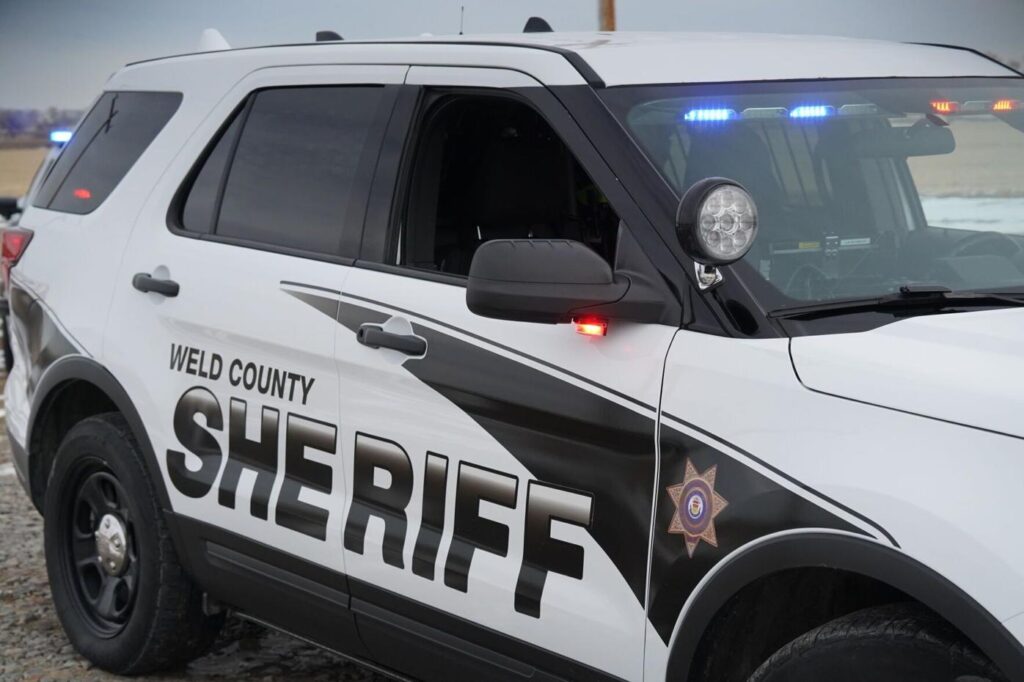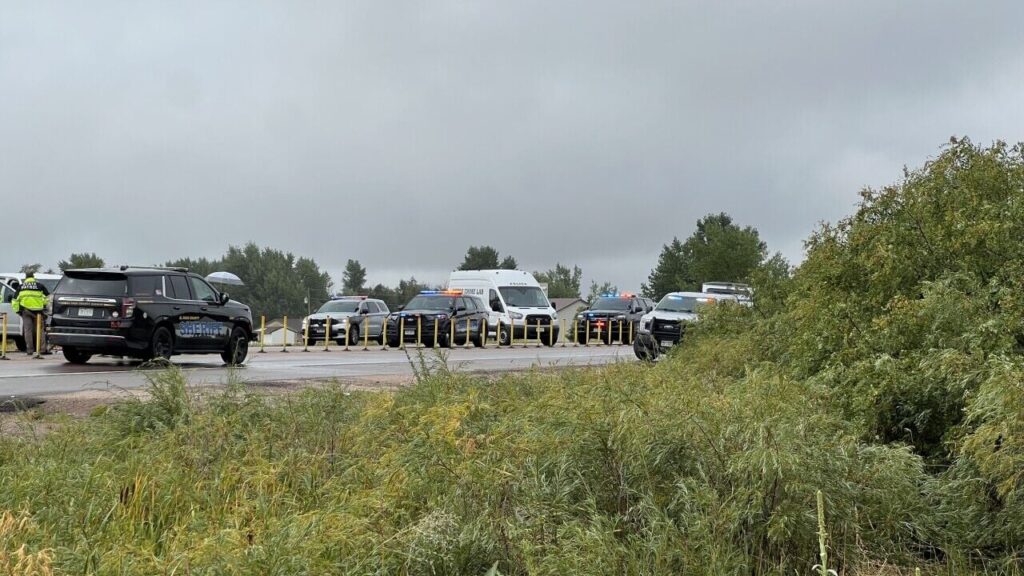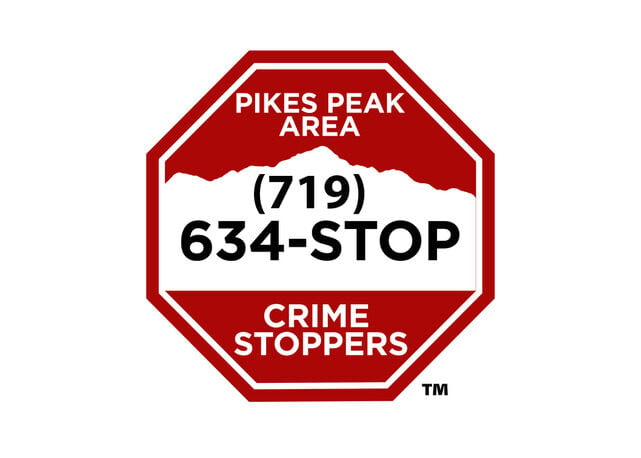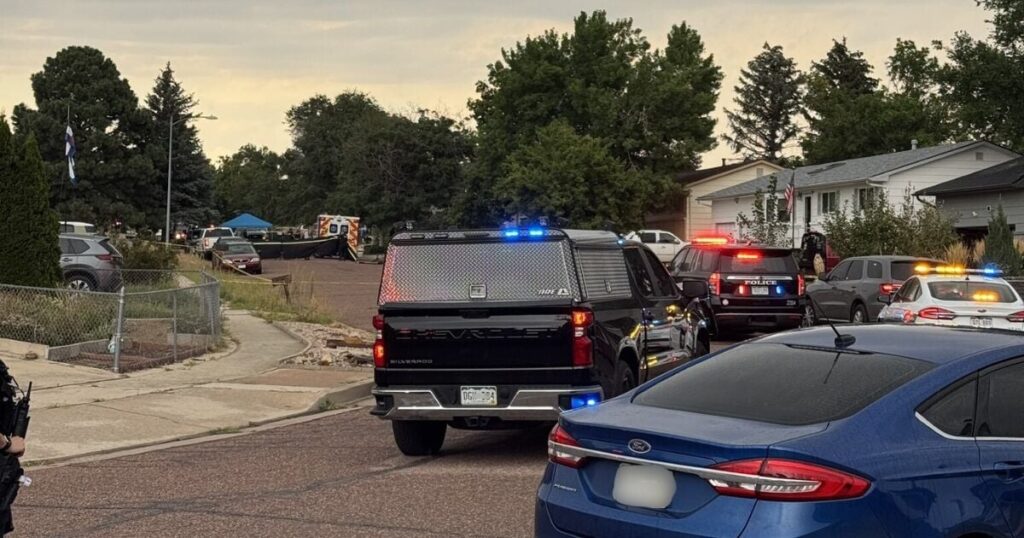Eyes on the city: Inside CSPD’s high-tech hub for tracking crime in real time
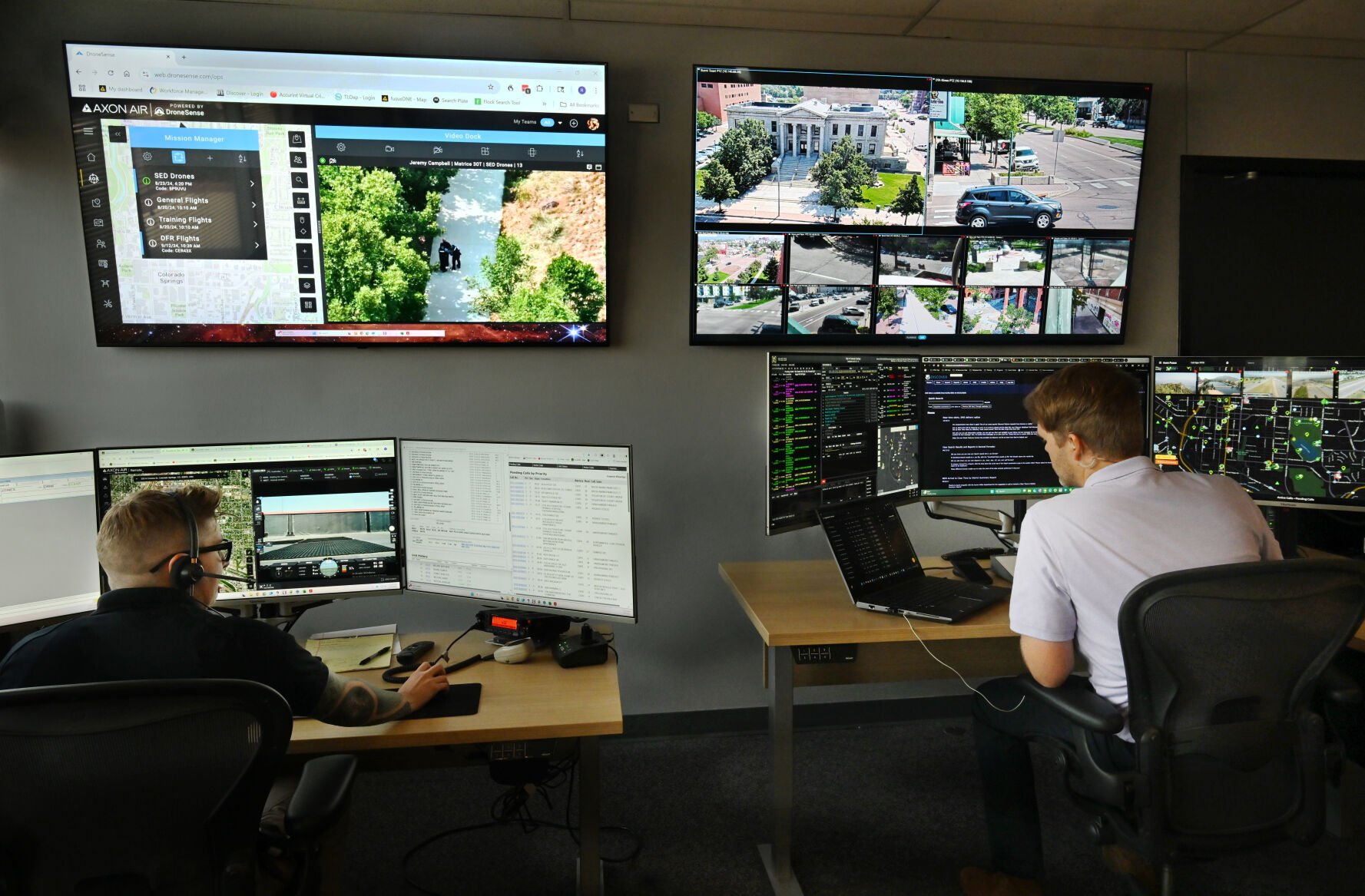
Jerilee Bennett, The Gazette
Colorado Springs Police Department dispatchers recently received a service call about a woman who was allegedly threatening passersby with a knife, occasionally swinging and thrusting it toward people who came near her.
As officers prepared to respond to the call, they began to receive clarifying information: The woman was holding a stick, not a knife, and was arrested without further incident.
“That new information changed the level of the response and likely saved the woman from getting injured,” said CSPD spokeswoman Caitlin Ford.
The near-immediate relay of information came from the Real-Time Crime Center, a specialized CSPD unit that integrates an array of technologies, including body-worn camera footage, live drone feeds, law enforcement data, and streams from public and private cameras.
Colorado Springs police have been using technology to help solve crimes for years. Officers began wearing body cameras in 2016, and the department launched its drone program in 2018. Security camera recordings have served as an investigative aid for decades.
But the Real-Time Crime Center, launched in October 2024, has tied these technologies together to allow near-immediate access to information, which is quickly relayed to officers on the street increasing officer safety and investigative efficiency, CSPD officials said.
“For the patrol officer on the street, the technology has changed, but the function of the job is still the same: You’re still talking to people and collecting evidence,” said Sgt. Matt McLain. “But we are using the available technology to help make us better at what we do.”
The disparate technologies are integrated through a platform called Fusus, a map-based interface that combines a wide range of available data into a single “pane of glass” that is monitored 20 hours a day, five days a week by a rotating crew of detectives and crime analysts, McLain said.
“Fusus ties everything together — the software, the databases, the cameras and the drones,” he said. “It’s a tremendous help.”
New York City’s police department launched the first RTCC in the U.S. in 2005, according to multiple reports. Since then, more than 200 law enforcement agencies have developed crime centers of their own, including the Miami-Dade, Tampa, Fresno, Minneapolis, St. Louis, Albuquerque, Seattle and Denver police departments.
CSPD’s Real-Time Crime Center has access to feeds from more than 800 cameras across the city, including city-owned and business feeds, officer body-worn cameras, drones and more. Greater access means increased efficiency and officer safety, McLain said.
“It’s invaluable to officer safety,” McLain said. “We’re able to assess a situation before our officers arrive, and give them a better idea of what they’re walking into.”
Just before 1:30 a.m. on July 5, police responded to calls about a group of people arguing outside a downtown nightclub, one of whom appeared to be armed with a rifle. When officers arrived, witnesses and bystanders told police that it was an argument that got out of hand, and that no one was armed.
The group appeared to disperse, but began arguing again. Real-Time Crime Center personnel reviewed security video from the area, saw a man reaching into a vehicle for a handgun and alerted nearby officers that there was an armed man at the scene.
An officer fatally shot the suspect, but assistance from the RTCC prevented others from being injured or killed, officials said.
The RTCC’s benefits extend beyond officer safety, according to McLain.
“We can use the combination of cameras to find a suspect who is evading police,” he said. “Sometimes we use it to find a victim and lead officers to get to the victim faster.”
Additionally, as in the case of the female suspect who was brandishing a stick and not a knife, the crime center’s technology can prevent certain situations from escalating to violence.
“It has been really effective, in some situations, as a de-escalation tool,” Ford said.
But not everyone is convinced that the benefits of Real-Time Crime Centers outweigh the potential risks. Organizations like the American Civil Liberties Union and the National Police Accountability Project have expressed concerns about invasion of privacy and the use of RTCCs for surveillance purposes.
“Local law enforcement has had access to cameras in their jurisdictions for a while now,” said Anaya Robinson, policy director for ACLU Denver.
“But when you tie in private cameras as well, or cameras that are owned by other entities, government or private, you are potentially developing a jurisdiction-wide surveillance system that looks at the vast majority if not nearly every square foot of city and county property. Our concern is that not only is the system surveilling potential criminal activity, but that it can surveil people’s day-to-day lives.”
Robinson added that, ideally, law enforcement should allow a period of public discussion before launching a platform like the Real-Time Crime Center.
“The availability of tech for law enforcement and for surveillance purposes is only going to grow, and there is no way to responsibly use these types of technology without safeguards, regulations and statutes determining how and when law enforcement can implement them and requiring a public comment period before doing so,” he said.
Because Real-Time Crime Centers are still relatively new, it’s too soon to tell whether they have a positive impact on investigative outcomes, Robinson argued.
However, a 2024 study by the University of Pennsylvania’s Criminology Department, titled “Creating Solvability With Real-Time Crime Centers,” concluded that while research remains limited, available data suggests that RTCC involvement can “significantly increase the likelihood that a case is solved.”
CPSD spokesman Ira Cronin said the RTCC operates “fully within the bounds of the U.S. and Colorado Constitutions, state law, and department policy,” and that its exclusive purpose is to respond to active calls for service and investigations.
Cronin added that the department was transparent in informing the public about the launch of the RTCC and its purpose.
“While we respect differing viewpoints, our focus remains on using these tools responsibly and lawfully to serve our community,” he stated.
McLain said public response to the RTCC has been largely positive.
“I think more community members are recognizing that these are useful technologies, so they expect us to use them for public safety,” he said.
While the Real-Time Crime Center’s camera network seems extensive, there are several pockets in the city where there is little to no coverage, largely because of a lack of community involvement, McLain said.
“Colorado Springs is actually a large city in terms of land area,” he said. “Eight hundred cameras might sound like a lot, but there are a lot of blank spots where we don’t have eyes. “
Business owners and residents can assist the Real-Time Crime Center by registering or integrating their cameras, officials said. Area businesses can integrate their cameras into the RTCC system by purchasing Fusus equipment. Residents can register their cameras with CSPD through a secure online portal.
“So far we’ve had a decent number of people who have signed up, but there could be so much more,” McLain said.
“We could have ten times as many people register their cameras. It’s just a way of helping us solve cases. If a resident emails video to us, it can save time instead of an officer spending an entire day canvassing a neighborhood.”
Registering a camera doesn’t allow police to access it without permission, and integrated cameras are for emergency purposes only and are not monitored by police, officials said.
McLain said he believes that most Colorado Springs residents will see the value of the Real-Time Crime Center as a public safety tool, and that officers will feel more secure knowing that RTCC detectives have their back.
“We’re seeing good interaction with officers, and we’re starting to solve cases faster and more efficiently,” he said. “Now officers know they have a detective on call waiting to help them with whatever case they’re working on, and they are starting to reach out to us.”
Colorado Springs police release body cam footage of fatal July 5 officer-involved shooting
From police staffing to federal raids: Colorado Springs mayor gives safety update during monthly briefing
Colorado Springs firefighters use drones to find missing hikers, fight wildfires







